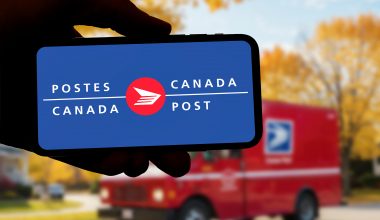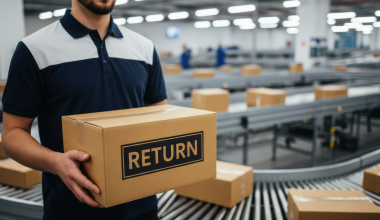The holiday season changes the convenience of express shipping into a high-pressure necessity, a ship that’s needed to be commandeered at all times. Order volumes surge, carriers hit capacity, and delivery windows shrink to just a few short days. As demand go up, so do surcharges, which creates a perfect storm where fast delivery becomes noticeably more expensive. It is a nightmare for D2C brands already balancing slim margins. .
The situation feels even tougher with the growth of competition. Larger retailers are capable enough to negotiate bulk rates. Smaller brands, however, face rising carrier fees, unpredictable transit times, and the constant risk of late deliveries turning into negative reviews. However, despite the chaos, affordable express shipping is not out of reach.
What Makes Express Shipping So Expensive in Q4?
Why is express shipping is so expensive. The reasons are quite obvious really:
Peak Carrier Rates
During Q4, carriers must operate at their highest annual demand levels. FedEx, UPS, and Canada Post introduce peak-season pricing to manage the surge in shipments, which significantly increases the base cost of express services for D2C brands.
Seasonal Surcharges
Holiday surcharges add quickly into the overall charges. Residential delivery fees, oversized package fees, and zone-based seasonal charges often get applied simultaneously, making express options much more expensive and harder for smaller brands to absorb.
Supply Chain Congestion
Air cargo, ground transport, and cross-border networks all experience heavy strain during the holiday peak. Because the capacity is stretched thin, the cost of moving goods through crowded lanes rises, and these added expenses flow directly into express shipping rates.
Last-Mile Delivery Crunch
Drivers face longer routes, more stops, and tighter timelines as December progresses. This pressure added to the last-mile pushes carriers to raise prices further to meet staffing, overtime, and operational demands, compounding overall express shipping costs.
6 Ways D2C Brands Can Offer Express Shipping Without Breaking the Bank
Here are the six core ways D2C brands can offer express shipping benefits without getting drowned in additional costs:
1. Use Regional Fulfillment Centers
One of the most effective ways for D2C brands to manage rising express shipping costs is to make the distance between product and customer shorter. Regional fulfillment centers can help with this inventory to be closer to major buying hubs, reducing both transit times and carrier fees. When products originate from a nearby facility rather than a distant warehouse, carriers classify the destination within lower shipping zones, which can dramatically decrease express rates.
This setup also helps brands stay resilient during peak periods. Thanks to multiple fulfillment points, inventory can be find a new route if one region experiences delays, congestion, or carrier bottlenecks. Ultimately, decentralized fulfillment creates faster and more predictable delivery options without forcing a brand to rely heavily on premium shipping methods.
2. Offer Express as a Paid Upgrade
Express shipping should not always be considered a default cost. Many successful D2C brands present express delivery as an optional upgrade that adds more value, giving customers the choice to pay for the speed they want. This approach ensures that operational margins remain protected, especially during Q4 when surcharges and peak rates can significantly erode profits.
For customers seeking products with high value or high volume (high-intent), the added fee is rarely a barrier. Shoppers looking for last-minute gifts, time-sensitive items, or premium experiences often expect express delivery to come with an additional charge. For the brand, this strategy reduces financial strain while still meeting customer expectations during the busiest shopping months.
3. Set Smart Cut-Off Dates
Clear and strategic cut-off dates lets brands guide customers toward earlier purchases and reduce the volume of last-minute express shipments. By announcing cut-offs prominently on product pages, banners, checkout pages, and emails, brands can shift demand to earlier days when standard or economy shipping still meets holiday deadlines.
Smart cut-offs also align consumer expectations. When cut-off dates are communicated accurately, customers are less likely to pay for express delivery unnecessarily or expect faster service during the heaviest congestion days. This proactive approach reduces operational pressure while stabilizing fulfillment workflows. At the same time, it also reduces the reliance on expensive fast-shipping services throughout December.
4. Batch Orders to High-Demand Zones
Brands often notice certain regions placing higher order volumes during peak season. Instead of shipping individual express parcels one by one, batching orders to these zones can unlock substantial savings. By consolidating multiple packages going to nearby postal codes, shipping partners can move freight more efficiently and pass the cost reduction back to the brand.
This tactic also helps optimize express lanes. Orders bound for the same metropolitan region or distribution hub can be forwarded together and sorted locally, rather than relying on long-haul express routes for each shipment. Batching is especially beneficial for brands with high volumes in cities like Toronto, Vancouver, or Montréal, where dense delivery routes allow carriers to operate more economically.
5. Use Hybrid Shipping Models
Hybrid models combine the strengths of multiple carriers to achieve faster delivery at lower cost. A common example is using a national carrier to transport packages to a regional hub and then handing off the final leg to a local last-mile provider. These arrangements bypass the most expensive parts of traditional express services while still delivering comparable speed.
For D2C brands, hybrid models offer flexibility during peak season disruptions. If one carrier faces delays, shipments can be routed through alternative networks that maintain faster timelines. The approach also reduces dependency on a single provider’s seasonal surcharges, creating a more predictable cost structure during Q4. With the right logistics partner, hybrid shipping can deliver express-like performance without the premium price tag.
6. Negotiate Carrier Rates in Advance
Planning ahead is crucial when preparing for Q4’s volatile shipping environment. Brands that negotiate their rates early in the year often secure significantly better pricing than those attempting last-minute arrangements. Carriers value predictability, so brands that can provide forecasted volumes or estimated daily order numbers are more likely to receive discounted express rates.
Advance negotiation also opens the door for additional perks: waived surcharges, lower residential delivery fees, or improved pricing for specific shipping zones. Even small reductions can make a noticeable difference when December order volumes surge.
How Endy Ships Fast Without Going Broke
One of the best examples of a brand winning at express shipping without going broke is Endy. Based in North York, Canada, the company keeps its site simple and its express-shipping workflow even simpler. As soon as a customer places an order, Endy immediately presents an express-shipping option. It features a Full Service Delivery Option in this regard, which is available in select Canadian cities. Once selected, the system issues a receipt and provides a clear, accurate timeline for when the order will leave the warehouse.
Because Endy maintains multiple warehouses equipped to handle fast fulfilment, the company can keep both standard and express delivery times tight. This distributed setup reduces distance, lowers costs, and allows Endy to keep express shipping comparatively affordable for customers while preserving its own margins
ShippingChimp’s Holiday Express offering gives D2C brands a streamlined, no-hidden-fee shipping solution with Shopify & ShipStation integration, low Canadian-rates from $5.11 CAD, and real-time tracking perfect for high-volume holiday fulfillment.
Express Shipping Toolkit: What You Need to Survive the Holiday Rush
Shipping rate calculator
ShippingChimp offers a Shipping Costs Calculator that enables ecommerce brands to input origin/destination, weight, dimensions and quickly estimate courier rates and delivery timelines. It highlights how factors like zone distance, dimensional weight, destination-type and service level all impact cost. Thanks to this tool, smarter decision-making can be done by comparing service options and optimizing fulfilment before the holiday surge.
Email templates for cut-off dates
ShippingChimp’s Holiday Hub promises resources tailored for peak season planning, including ready-to-use templates for signup messaging, order-cut-off notices, and customer communication around delivery deadlines. These templates help brands clearly set expectations, direct customers toward preferred shipping windows, and reduce last-minute express surges.
Carrier SLA comparison
Also available via the Holiday Hub is a comparison framework that lets brands to evaluate carrier service-level agreements (SLAs), year-end holiday performance, surcharge risks and final-mile reliability. This enables brands to choose between cost vs speed trade-offs more strategically rather than assuming all “express” services are equal.
❓ FAQ
How can I speed up shipping without using express carriers?
Speeding up delivery without relying on premium express services is absolutely possible, but only if brands optimize their upstream logistics. The most effective method is placing inventory closer to customers through regional fulfilment centers. This shortens zone distance, reduces transit time, and often delivers parcels within two to three days using standard ground services. Another strategy is improving warehouse efficiency, which involves fast pick-and-pack workflows, automated labels, and same-day dispatch rules can cut internal delays that often matter more than carrier speed.
Should I offer express shipping for free?
Offering express shipping for free can boost conversions, but it is not always sustainable during the holidays. Q4 surcharges, carrier peak fees, and service-level upgrades can significantly pull down the margins. It is especially the case for D2C brands that already operate on low profits. Therefore, instead of absorbing the cost outright, many brands take a tiered approach.
How do I handle express shipping delays during the holidays?
Set realistic expectations with clearly published cut-off dates, and automate tracking emails. This way, the customers always know where their package stands. This reduces WISMO tickets and prevents negative sentiment caused by uncertainty.
Internally, maintain buffer stock, flexible fulfilment shifts, and redundancy across multiple warehouses to prevent bottlenecks. The brands that will win this holiday season are those that communicate early, stay agile, and build operational breathing room before the rush begins.
What’s the best shipping carrier during the holidays for D2C brands?
For Canadian D2C brands specifically, ShippingChimp is often considered the most cost-efficient option during the holidays, especially for express-style delivery. Unlike major carriers. Also ShippingChimp offers Holiday-surcharge-free express alternatives for many Canadian ecommerce brands during peak season.
- Holiday Shipping Deadlines 2025: When to Ship for On-Time Christmas Delivery - December 3, 2025
- Best Shipping Software for Canadian D2C Brands - November 25, 2025
- Why Affordable Express Shipping Feels Impossible During the Holidays? - November 19, 2025






